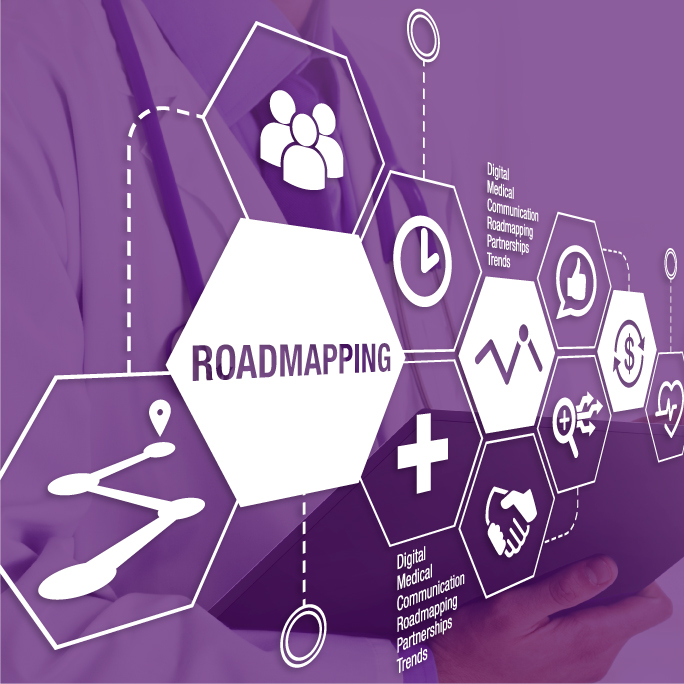
Digital health roadmap for your medical device
If you are managing medical device products, there is little doubt that you have a digital health roadmap. For years the investment community has been funneling dollars into anything that spits out data. But getting a return on investment from the digital health future may not be easy.
Recent reports continue to show interest in collecting and analyzing data from regulated medical devices. In a recent survey (0) very little digital connectivity was claimed in medical products today, though most respondents expected much more within a year. With significant investment opportunities, what should those product roadmaps describe?
The obvious answer is solid, accurate and secure data connectivity. Medical device companies have an advantage here compared to the consumer health and wellness plays. We need to ensure the safety, integrity and quality of the information reported. Though this does not sound “agile” or aligned to current hype, strength comes from doing it right. Seasoned healthcare investors are already seeing the pitfalls of being at the top of a hype cycle, such as avoiding “smart technologists who are blind to or dismissive of the idiosyncrasies of healthcare.”
Less obvious digital health roadmap items are also key: in particular partnerships and support services. At the heart of the digital health craze is the concept of a whole product. The whole product includes all the things which can enhance value to customers in addition to the core product. Geoffrey Moore covers whole products in his classic book “Crossing the Chasm”, written for markets in the throes of early adopters.
Take for example the least digital device imaginable: a balloon. Apollo Endosurgery, Inc. has a PMA approval on Orbera, a soft gastric balloon that is placed in your stomach to encourage portion control in weight lose. All that work to get a device which is safe and reduces appetite and yet the company realised they only had half the solution. They solved the stimulus side of hunger, but not the response to overeating. So they teamed up with Zillion to incorporate online coaching. The Zillion platform will give Orbera patients access to a support program that includes video conferencing with dietitians, exercise physiologists, and psychologists. It will track weight loss, encourage personal journaling, share recipes and meal plans. Physicians have access as well to support the care program. Zillion is a powerful partner for Orbera as they are the technology platform for UnitedHealth Group’s Real Appeal weight-loss program, with significant access to further services and clients.
Orbera demonstrates the path forward for digital health: if the solution helps improve health, we can figure out the security, data integrity, reliability and connectivity to enable it.
Digital Health roadmapping is a great tool for partnerships as an alignment tool. It can align the R&D activities with customers, users, investors, suppliers, contractors, integrators, support services and business partners. These multiple dimensions are tricky. I was told by a McKesson product manager that they had four roadmaps for his product: one for R&D, one for finance, and one for marketing and one for clients and sales.
Digital health roadmaps start with accessible device data and include eco-system partners, but the key ingredient is information exchange that drives clinical value. The big question is which specific human interaction can be enhanced with medical device data and support services.
Pfizer and IBM are attacking Parkinson’s Disease starting with accessible data. Levodopa is the most effective drug for treating Parkinson’s disease but it is often complicated by significantly disabling fluctuations and dyskinesias. Dose modifications are required as the disease progresses. The team is working on accurate tracking device measurements including motor function, dyskinesia, cognition, sleep, grooming, dressing and eating observations. Their hope, I believe, is to discover key human interactions that benefit for deep analytics. The product roadmaps for the support services will flow from there.
Digital health is about connecting data systems to better connect people. When we define how to do that, we need to align all the stakeholders on both the fundamentals and the longer term adoption curve. The final item for the roadmap is to enable user feedback. Plan out evaluation and user feedback cycles, both pre- and post market launch. Though this sounds like the normal ISO 62366 usability evaluation, digital health data enables so many options for service enhancements and new user interactions. These large and small evaluations fit across the product life cycle.
How does all this long term roadmapping help? Each data transaction has value in the medical device ecosystem. But it is surprisingly hard to get the human interactions right. To do so we will need to focus on specific business cases for evaluation, and so up the chance of a return on investment.
Maybe you want to use medical device data to save providers time, by showing patient trends? How about using the device data to identify usage patterns in the patient population, to plan new improvements? Both ideas use device measurements records, so the implementation will be easy. Hold that thought! The first view is for a doctor who will spend no more than 3 seconds in an app; the second view is part of post-product surveillance requiring days of analysis of a large data-set, with all the controls expected for good privacy, security and potential for external auditing.
There is no question that medical devices will continue to connect and share information within a new value-based healthcare system. At the same time, it is impossible to predict exactly what technological infrastructure will support this new world. For now let’s roadmap simple and specific use cases for our products, and align partners to evaluate the value of integrated support services in the future.
Mike Sanders is a former StarFish Medical Software Engineering Project Manager. He writes digital health blogs on topics including mobile and cloud privacy, security and cyber threats.
Images: StarFish Medical
